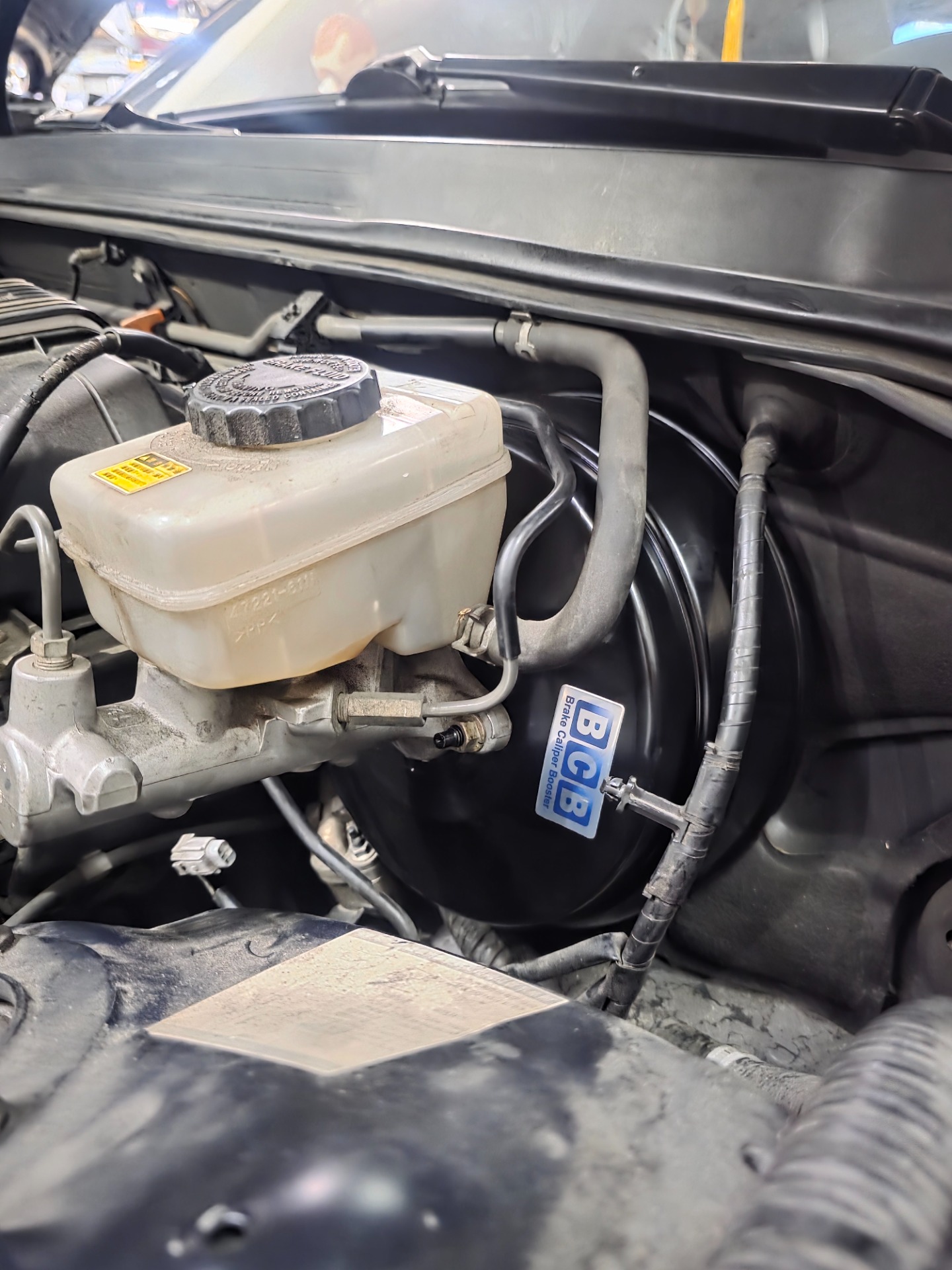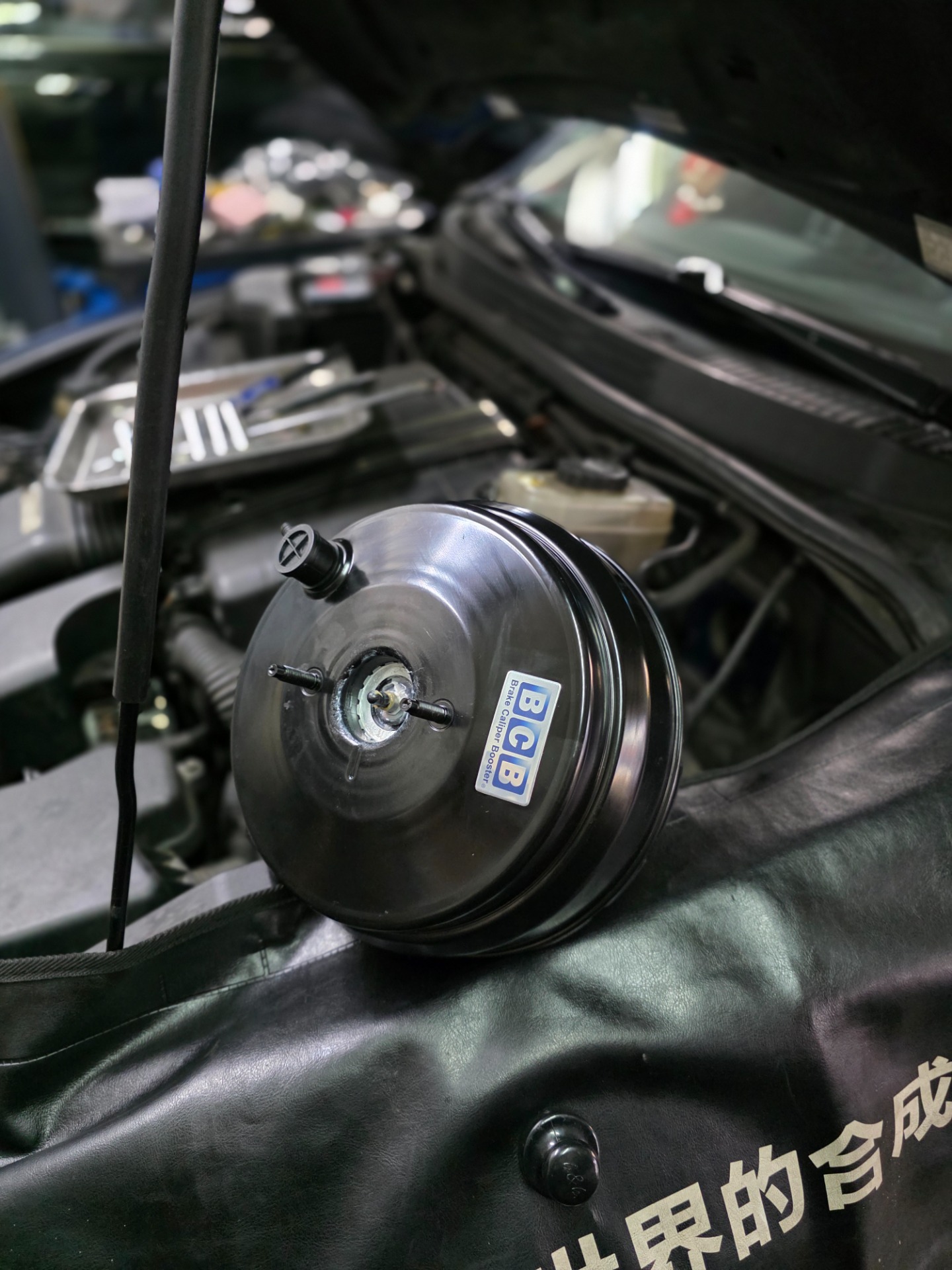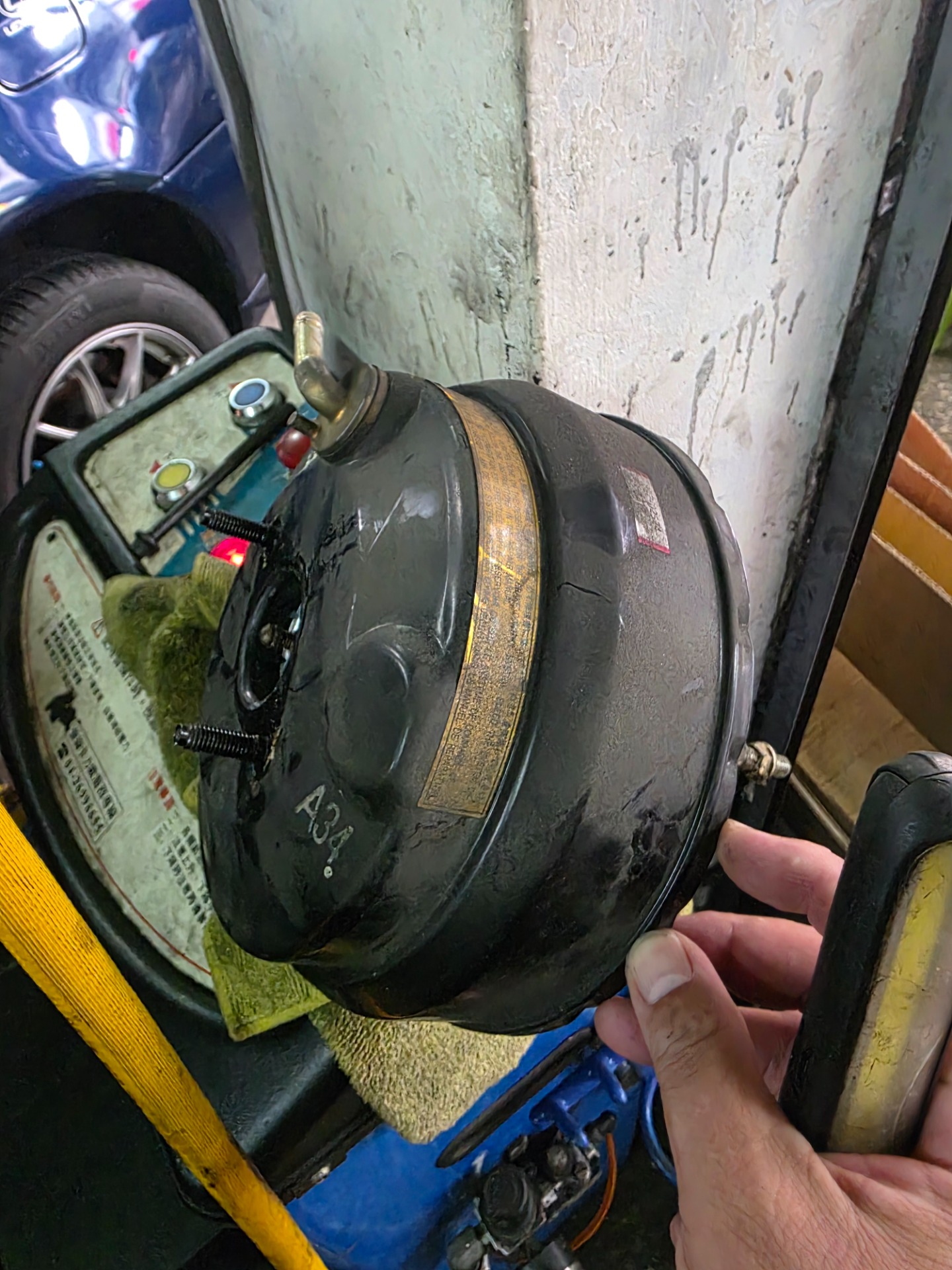BCB Brake Booster for Lexus Altezza/IS (OEM Replacement)

Summary
-
Symptom set: delayed deceleration, heavier pedal, hissing noise near the pedal.
-
Root cause: internal leak in the brake booster (vacuum servo).
-
Parts reality: many originals are discontinued; used/reman quality varies.
-
BCB fix: new OEM-spec 8″+9″ booster (stock is 7″+8″), internally calibrated, ~30% more assist, zero modifications.
What Drivers Experience
Owners describe: "The usual pedal pressure no longer slows the car. I must press deeper and harder." Some hear a short hiss when pressing; it disappears when releasing. These are textbook signs of a booster losing vacuum assistance.
What's Actually Failing
The booster (vacuum servo) multiplies leg force via a diaphragm, control valve, and spring. When sealing fails, vacuum bleeds off. Hydraulics still work, but assistance drops—hence the heavier pedal and delayed decel. The localized hiss near the pedal box often points to the leak path.
Quick Checks a Shop Can Do
-
Engine-off test: Pump pedal with engine off, hold, then start. A healthy system lets the pedal sink slightly as vacuum builds.
-
Vacuum supply: Inspect hose cracks and the one-way check valve orientation.
-
Listen for hiss: A consistent hiss on application suggests internal leakage within the booster.
Why Pads/Fluid Aren't the Fix
Worn pads or old fluid cause other issues (noise, fade, long travel), but the trio of heavier effort + delayed decel + pedal-area hiss strongly implicates the booster on aging XE10 cars.
Parts Reality on the XE10
Original boosters for first-gen IS/Altezza are often discontinued. Generic or reman units can be inconsistent and sometimes require adjustments many workshops prefer to avoid.
The BCB Solution: Upsized, Direct-Fit, Calibrated
-
Size & design: BCB supplies a new OEM-spec dual-diaphragm 8″+9″ booster (the factory unit is 7″+8″).
-
Assist gain: About +30% assistance versus a typical stock XE10 booster, reducing required leg force while maintaining linear control.
-
Direct fit: No firewall drilling, bracket changes, or hydraulic hard-line bending.
-
System integrity: Factory ABS behavior and brake balance are preserved.
-
Pre-set geometry: Pushrod length is set for the XE10 pedal box and OE master cylinder.


What You'll Feel After the Swap
-
Earlier deceleration for the same pedal input in city traffic.
-
Reduced fatigue in stop-and-go driving.
-
Clear, predictable pedal build-up without a spongy "dead zone."
Case Snapshot (Typical)
-
Complaint: Car wouldn't slow with the usual pedal pressure; driver heard a hiss near the pedal during application.
-
Diagnosis: Internal leakage in the stock 7″+8″ booster.
-
Fix: BCB 8″+9″ calibrated, new OEM-spec direct-fit unit.
-
Result: Assistance restored; lighter, more linear pedal with ~30% higher assist.
Installation Notes for Workshops
-
Verify vacuum hose health and one-way valve orientation before condemning the booster.
-
Install the BCB 8″+9″ unit; torque to spec; confirm pushrod free play (pre-set for XE10).
-
Bleed brakes, then perform a controlled road test.
-
If any hiss persists, recheck hose seating and grommets.
Safety Reminder
Do not continue driving if assistance is inconsistent or a hiss is present. Have the vehicle inspected and repaired by a qualified technician.
